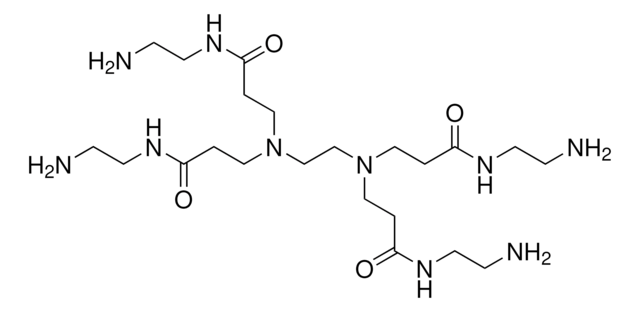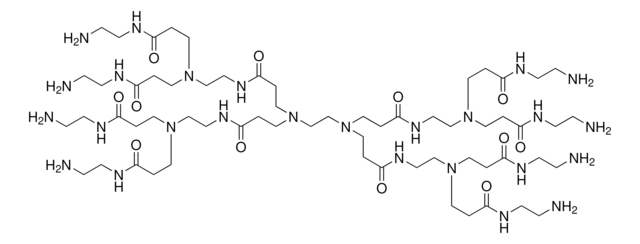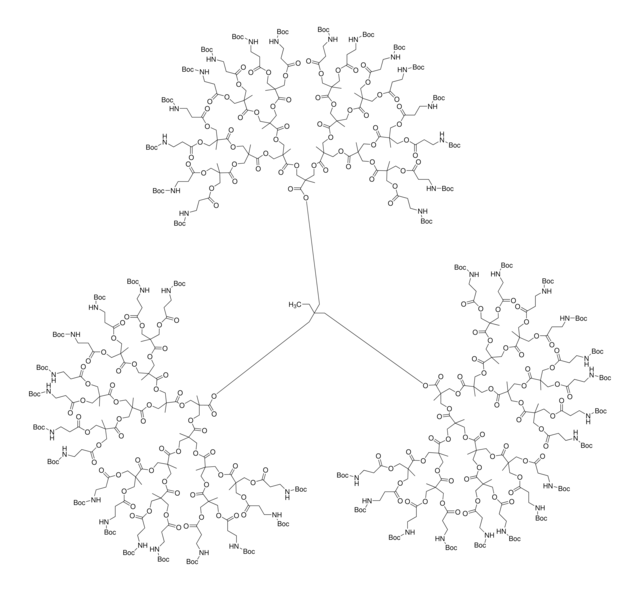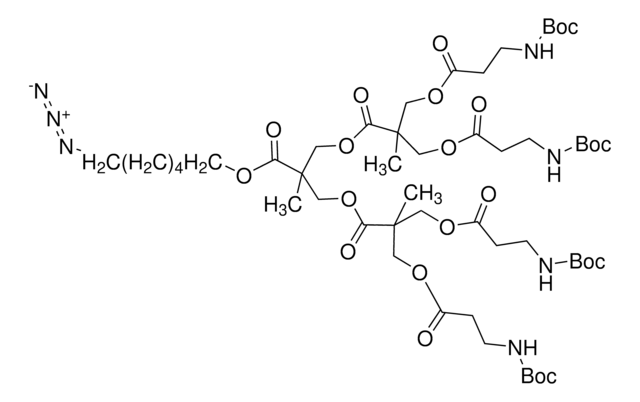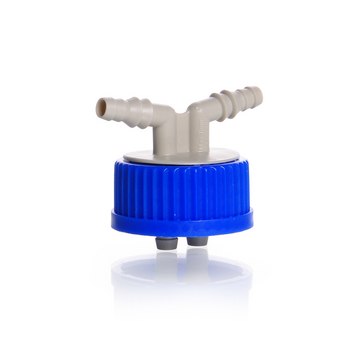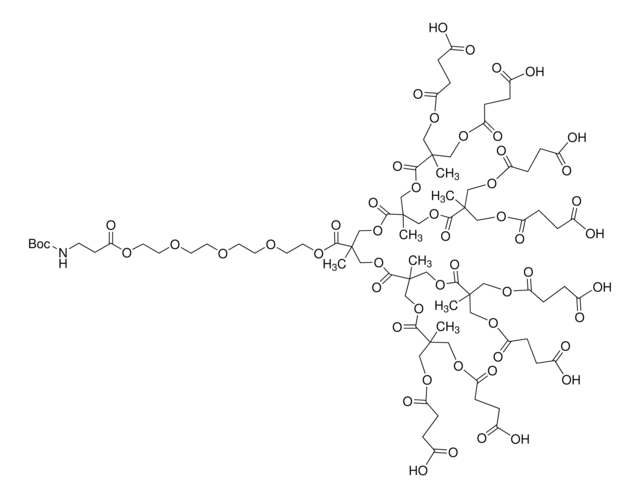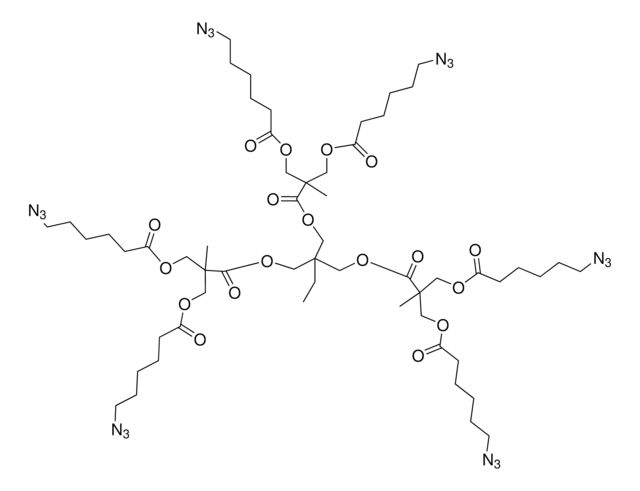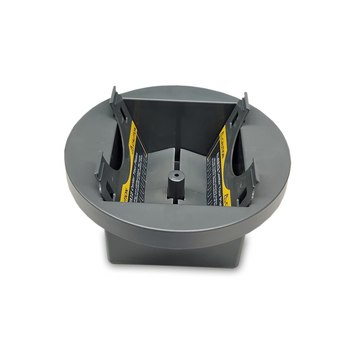901408
Polyester bis-MPA dendron
no. Surface Groups 4, carboxyl, 1 NHBoc (core), generation 2
Synonym(s):
PFd-G2-BocNH-COOH, bis-MPA dendron
About This Item
Recommended Products
form
solid
mol wt
generation 2
no. Surface Groups
4
color
white to off-white
storage temp.
−20°C
General description
- Polymer architecture: Dendron
- Generation: 2
- Core functional group: Boc-protected amine
- End group functionality: Carboxylic acid
- No. surface groups: 4
- Calculated mol. wt.: 1114.06 g/mol
- Boc: tert-Butyloxycarbonyl
- bis-MPA: 2,2-Bis(hydroxymethyl)propionic acid
Application
Storage Class Code
11 - Combustible Solids
WGK
WGK 3
Flash Point(F)
Not applicable
Flash Point(C)
Not applicable
Regulatory Information
Choose from one of the most recent versions:
Certificates of Analysis (COA)
Sorry, we don't have COAs for this product available online at this time.
If you need assistance, please contact Customer Support.
Already Own This Product?
Find documentation for the products that you have recently purchased in the Document Library.
Articles
Dendritic molecules' biomedical applications, particularly bis-MPA dendritic scaffolds, hold promise for drug delivery.
Dendrimers, polymer nanostructures, are synthesized for specific purposes by manipulating critical nanoscale design parameters (CNDPs).
Our team of scientists has experience in all areas of research including Life Science, Material Science, Chemical Synthesis, Chromatography, Analytical and many others.
Contact Technical Service